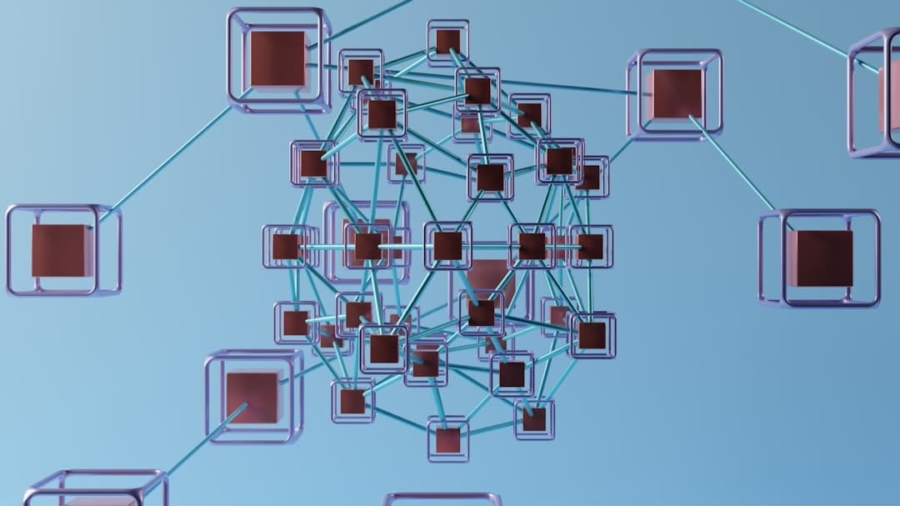The Internet of Things (IoT) represents a transformative shift in how devices communicate and interact with one another, creating a network of interconnected systems that can share data and automate processes. This technology has found significant applications across various sectors, including healthcare, transportation, and agriculture. However, one of the most promising areas for IoT is in energy management, particularly through the development of energy sharing networks.
These networks enable communities to generate, share, and consume energy more efficiently, fostering a decentralized approach to energy distribution that can lead to reduced costs and enhanced sustainability. Energy sharing networks leverage IoT technology to facilitate real-time communication between energy producers and consumers. By utilizing smart meters, sensors, and advanced analytics, these networks can optimize energy distribution based on demand and supply dynamics.
For instance, households equipped with solar panels can share excess energy with neighbors, creating a localized energy ecosystem that minimizes reliance on traditional power grids. This not only empowers communities to take control of their energy resources but also contributes to a more resilient and sustainable energy future.
Key Takeaways
- IoT and energy sharing networks are revolutionizing the way communities manage and distribute energy resources.
- Community-wide energy sharing networks can lead to reduced energy costs, increased energy efficiency, and a more sustainable energy infrastructure.
- IoT plays a crucial role in monitoring and managing energy consumption by providing real-time data and insights for better decision-making.
- Data security and privacy are essential in IoT energy sharing networks to protect sensitive information and ensure trust among participants.
- Successful case studies of IoT energy sharing networks demonstrate the potential for significant energy savings and environmental benefits.
The Benefits of Community-Wide Energy Sharing Networks
Community-wide energy sharing networks offer a multitude of benefits that extend beyond mere cost savings. One of the most significant advantages is the promotion of renewable energy sources. By facilitating the sharing of locally generated renewable energy, such as solar or wind power, these networks encourage the adoption of clean energy technologies.
This shift not only reduces greenhouse gas emissions but also helps communities become less dependent on fossil fuels, aligning with global sustainability goals. Moreover, energy sharing networks can enhance energy resilience within communities. In times of crisis or natural disasters, localized energy production and sharing can provide a buffer against disruptions in the central grid.
This resilience is further bolstered by the ability to balance supply and demand dynamically, ensuring that energy is available where and when it is needed most.
The Role of IoT in Monitoring and Managing Energy Consumption

IoT technology plays a pivotal role in the effective monitoring and management of energy consumption within sharing networks. Smart meters equipped with IoT capabilities allow for real-time tracking of energy usage at both the individual and community levels. This data can be analyzed to identify patterns in consumption, enabling users to make informed decisions about their energy use.
For instance, households can adjust their consumption habits based on peak demand times or take advantage of lower rates during off-peak hours. Additionally, IoT devices can facilitate automated energy management systems that optimize energy distribution based on real-time data. For example, if a household generates excess solar power during the day, IoT-enabled systems can automatically redirect this surplus to neighboring homes or store it for later use.
This level of automation not only maximizes the efficiency of energy use but also minimizes waste, contributing to a more sustainable energy ecosystem.
The Importance of Data Security and Privacy in IoT Energy Sharing Networks
As with any technology that relies on data exchange, security and privacy are paramount concerns in IoT energy sharing networks. The interconnected nature of these systems means that vulnerabilities in one device can potentially compromise the entire network. Cybersecurity threats such as hacking or data breaches could lead to unauthorized access to sensitive information about energy consumption patterns or even control over energy distribution systems.
To mitigate these risks, robust security protocols must be implemented at every level of the network. This includes encryption of data transmitted between devices, secure authentication methods for users accessing the system, and regular updates to software to address emerging threats. Furthermore, privacy considerations must be taken into account; users should have control over their data and be informed about how it is being used.
Transparent policies regarding data collection and sharing can help build trust among users and encourage wider adoption of IoT energy sharing networks.
Case Studies of Successful IoT Energy Sharing Networks
Several case studies illustrate the successful implementation of IoT energy sharing networks around the globe. One notable example is the Brooklyn Microgrid project in New York City, which allows residents to buy and sell excess solar power generated by their homes.
Participants can monitor their energy production and consumption in real-time through an app, fostering a sense of community engagement and empowerment. Another compelling case is the EcoGrid project in Denmark, which aims to create a smart grid that integrates renewable energy sources with consumer demand. By employing IoT technology to monitor energy usage patterns across the community, EcoGrid facilitates demand response strategies that encourage users to adjust their consumption based on grid conditions.
This project has demonstrated significant reductions in peak demand and increased integration of renewable resources into the grid, showcasing the potential for IoT-driven solutions in enhancing energy efficiency.
The Role of Government and Policy in Supporting IoT Energy Sharing Networks

Encouraging Renewable Energy Generation
Policymakers can encourage households to invest in renewable technologies, such as solar panels, by offering incentives like feed-in tariffs or tax credits. This increases the potential for energy sharing within communities, ultimately contributing to a more sustainable energy landscape.
Fostering Collaboration and Innovation
Governments can facilitate collaboration between stakeholders, including utility companies, technology providers, and community organizations, to develop innovative solutions that address local energy challenges. These partnerships can ensure that all participants benefit from the shared resources, leading to more efficient and effective energy sharing networks.
Public Funding for Pilot Projects
Public funding for pilot projects can help demonstrate the viability of IoT energy sharing networks, paving the way for broader adoption across regions. By supporting these pilot projects, governments can play a crucial role in accelerating the transition to a more sustainable and community-driven energy system.
Challenges and Barriers to Implementing IoT Energy Sharing Networks
Despite the numerous advantages associated with IoT energy sharing networks, several challenges hinder their widespread implementation. One significant barrier is the lack of standardization across devices and platforms. With various manufacturers producing IoT devices with different protocols and communication standards, interoperability becomes a critical issue.
Without a unified framework, integrating diverse systems into a cohesive network can be complex and costly. Another challenge lies in the initial investment required for infrastructure development. While long-term savings may offset these costs, many communities may struggle to secure funding for the necessary technology and installations upfront.
Additionally, there may be resistance from traditional utility companies that perceive decentralized energy sharing as a threat to their business models. Overcoming these barriers will require concerted efforts from all stakeholders involved in the energy ecosystem.
Future Trends and Opportunities for IoT in Community-Wide Energy Sharing Networks
Looking ahead, several trends indicate promising opportunities for the future of IoT in community-wide energy sharing networks. One such trend is the increasing integration of artificial intelligence (AI) into these systems. AI algorithms can analyze vast amounts of data generated by IoT devices to optimize energy distribution further and predict consumption patterns more accurately.
This capability could lead to even greater efficiencies in managing local energy resources. Additionally, as electric vehicles (EVs) become more prevalent, they present an exciting opportunity for integration into energy sharing networks. EVs can serve as mobile storage units for excess renewable energy generated within communities.
By allowing EV owners to share stored energy back into the grid during peak demand periods, communities can enhance their overall resilience while providing additional income streams for EV owners. The convergence of IoT technology with emerging trends such as blockchain for secure transactions and AI for predictive analytics will likely shape the future landscape of community-wide energy sharing networks. As these technologies continue to evolve and mature, they will unlock new possibilities for sustainable energy management at the local level, ultimately contributing to a greener planet.
The Role of IoT in Creating Community-Wide Energy Sharing Networks can be further enhanced by utilizing the top 10 best laptops for SolidWorks in 2023. These laptops, as highlighted in this article, offer powerful performance and capabilities that can aid in the design and implementation of energy sharing networks. By leveraging these advanced tools, communities can optimize their energy usage and distribution more effectively.
FAQs
What is IoT?
IoT stands for Internet of Things, which refers to the network of physical devices, vehicles, home appliances, and other items embedded with electronics, software, sensors, actuators, and connectivity which enables these things to connect and exchange data.
What is community-wide energy sharing?
Community-wide energy sharing refers to the practice of sharing excess energy generated by one household or building with others in the community. This can be done through a grid or peer-to-peer sharing system.
How does IoT contribute to community-wide energy sharing networks?
IoT enables the monitoring and control of energy usage and generation in real-time, allowing for more efficient energy sharing and distribution within a community. IoT devices can also facilitate the communication and coordination between different energy sources and consumers.
What are the benefits of community-wide energy sharing networks enabled by IoT?
Some benefits of community-wide energy sharing networks include increased energy efficiency, reduced energy costs, lower carbon emissions, and improved resilience of the energy system. It also promotes a sense of community and cooperation among residents.
What are some examples of IoT-enabled community-wide energy sharing networks?
Examples of IoT-enabled community-wide energy sharing networks include microgrids that connect multiple energy sources and consumers within a localized area, as well as peer-to-peer energy trading platforms that allow individuals to buy and sell excess energy directly to their neighbors.

